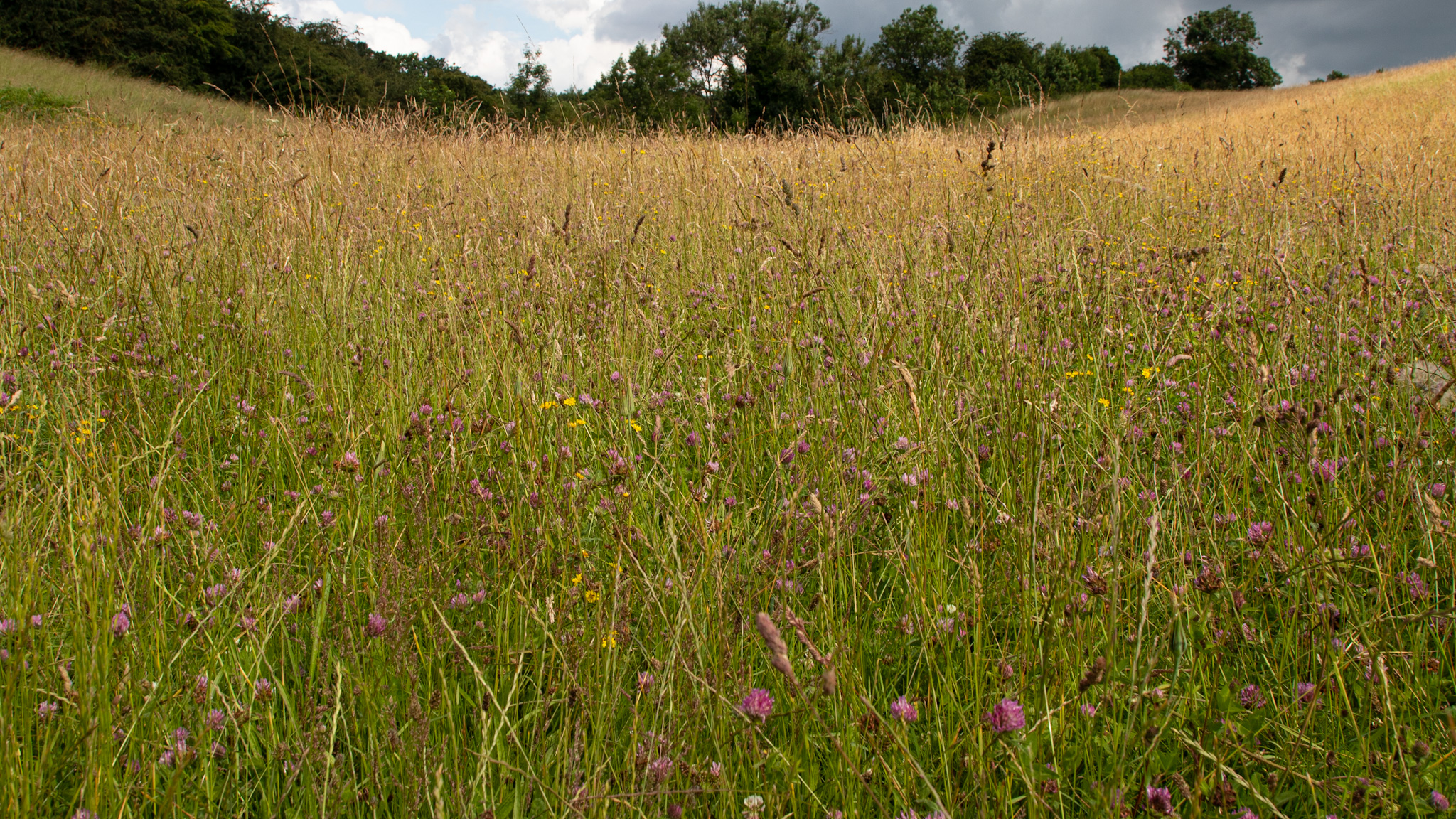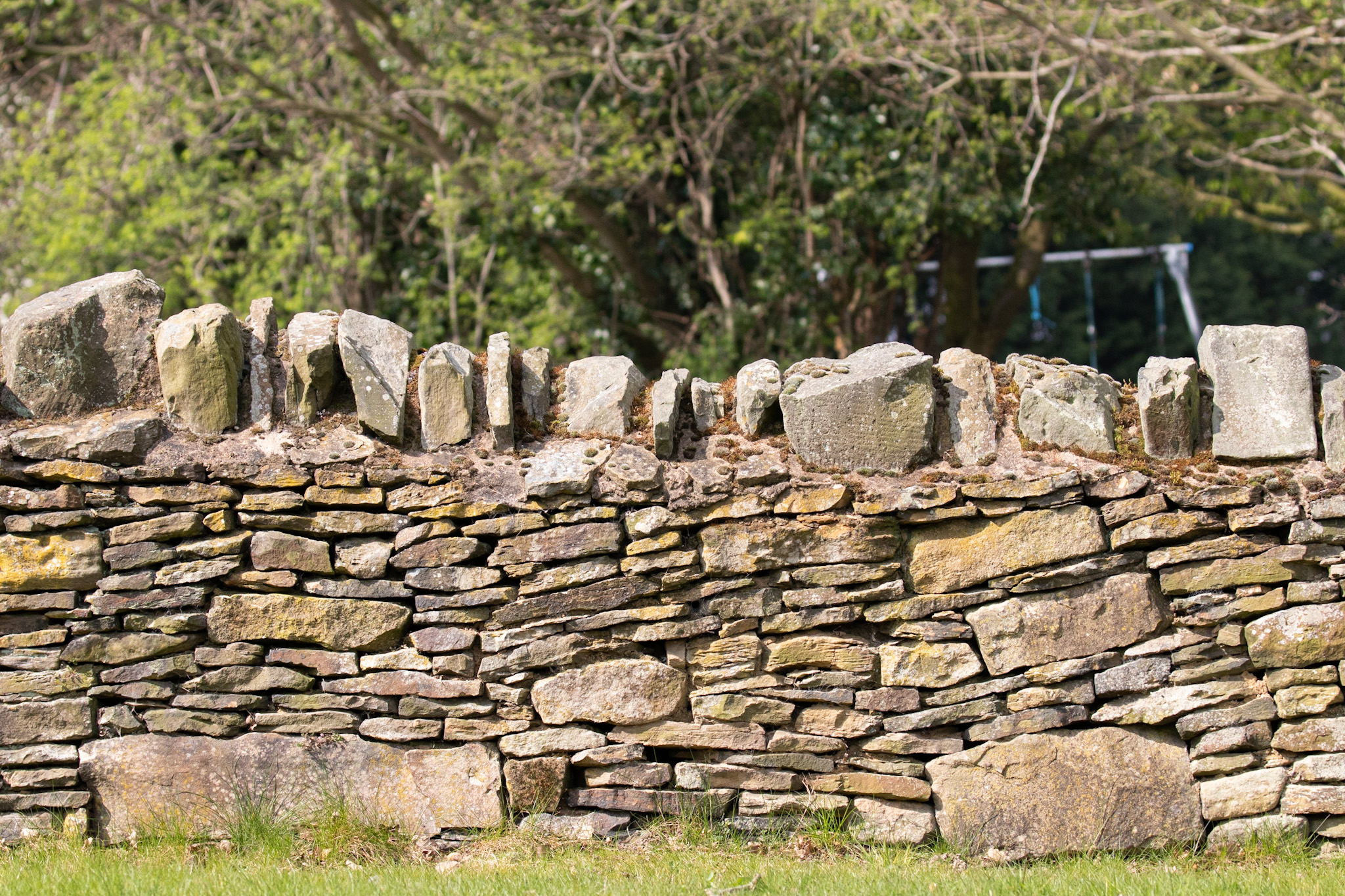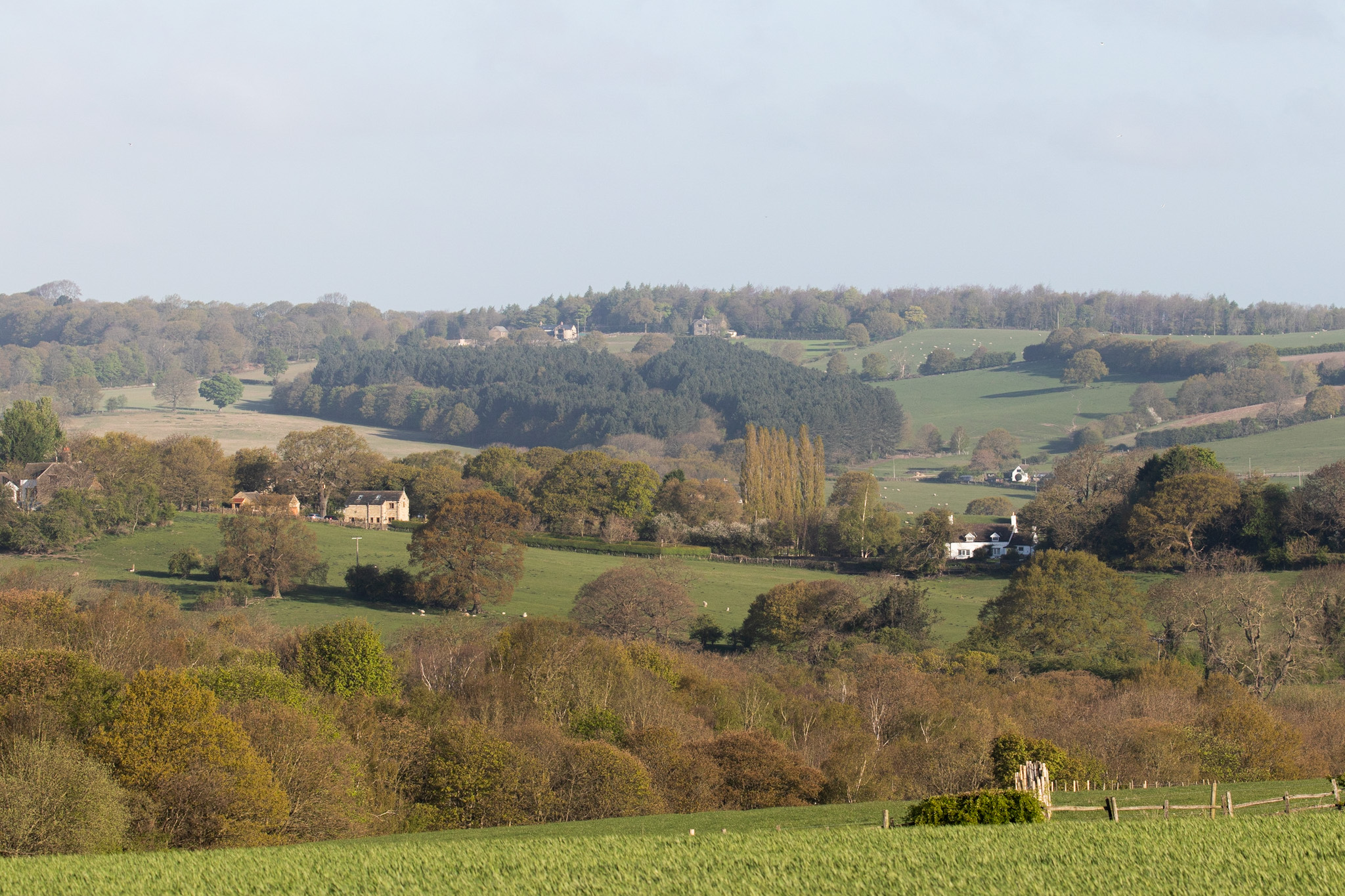Search for ‘British landscape’ in Google and what do you get? Apart from occasional pictures of notable British landmarks you get a bunch of pictures showing a typical rolling green landscape. Add in the word ‘natural’ and the results don’t really change, just more images of rolling green hills, drystone walls and the occasional hedgerow.
So why do we think this is a natural landscape? If you look up the dictionary meaning of natural it says that natural is ‘as found in nature and not involving anything made or done by people.’ That would imply that the typical rolling hills of Britain are a landscape that is created by nature and not affected by people. Is that really the case?
Lush Green Grassland
Are lush green fields of agricultural grassland natural? In a word, no!

Natural grassland is colourful and diverse with typical unimproved grassland displaying around 30-40 grass and plant species and some of the more diverse areas supporting over 100 species. Then there’s the array of mammals, invertebrates and birds the grassland also supports.
Is that the grassland we see in our image of natural Britain? No! The lush green fields we usually see are heavily improved grassland that has been intensively grazed to ground level, seeded with fast growing agricultural species and treated with fertiliser to encourage rapid growth. The fields might support 5-10 grass and plant species and predominantly support one animal, sheep, cows or horses.
Drystone Walls
A drystone wall is thought to be a fundamental part of the ‘natural’ British landscape, although there’s not really anything natural about them.

Stone quarried from the ground, broken into small chunks and stacked into lines to mark out ownership boundaries and to ensure that livestock don’t escape!
Hammered Hedgerows
If you are lucky your image of natural Britain will include hedgerows (unlike the image I used for this blog), and if you are even luckier those hedgerows will be tall, wide and diverse. In reality though, most hedgerows are nothing like that, predominantly being a line of a single species that have been managed so aggressively that they almost look like a wall, and they never produce flower or fruit.
Although hedgerows are more natural than walls, lines of trees don’t naturally grow on command along field boundaries and don’t keep themselves flailed back to a neat and tidy boundary feature.
A natural landscape wouldn’t include hedgerows, it would be made up of woodlands, trees, thickets and scrubby patches providing food and shelter for a wide range of mammal, invertebrate and bird species.
Not So Natural
If all of the parts of our ‘natural British landscape’ are created by people, and therefore not natural, then why do we think that is the case? It’s an issue of shifting baselines. People get out of cities and into the countryside and that’s what they see, rolling green hills being grazed by sheep, so they think it’s a natural landscape, and that’s what they are told. Look again, look past the picture postcard image of rural Britain and start to think. Is it really a natural landscape? Does it support wildlife, or just livestock? What would an actual natural landscape look like?
We need to get past our shifting baselines and start to show people a truly natural landscape, one that supports our iconic wildlife. Yes, of course we need space for farming, but we need to make space for wildlife and nature too, and natural landscapes aren’t just for wildlife, they also help us reduce the impacts of climate change, prevent flooding, improve crop pollination and generally provide us with somewhere we can enjoy, which helps health and wellbeing.
Re-wilding projects are showing us that we can return parts of our land to a natural landscape, and surprisingly quickly. Once we do, the projects have shown us that wildlife will return if it’s given the opportunity. Look at the Knepp Estate as an example, according to the book about the estate ‘Wilding’ (definitely worth a read), there have been astounding results from their re-wildling project. Species that were extremely rare in this country have returned, and thrived, once given the natural landscapes they needed.

So lets not fight these projects, re-wilding isn’t a dirty word, it’s a requirement, if we are going to retain a countryside to enjoy. We need to shift our baseline again and start to realise that what we see isn’t natural. Then, when we see an area that looks a bit messy and unkempt, we’ll realise that it’s not being neglected, its being enhanced. Stop and listen, there will be birds singing, small mammals squeaking and you’ll see butterflies flitting around in the grassland and endless tracks from animals going about their business. Then the next time you are out in what we currently think of as a natural landscape, do the same again, stop and listen, look for the butterflies and animal tracks. You’ll realise there aren’t any, just the continuous bleat or moo from the livestock and very little else.
